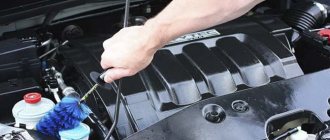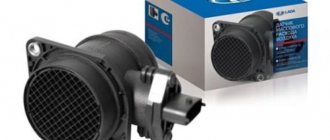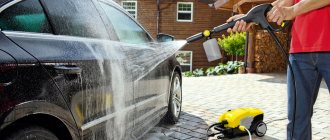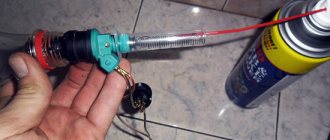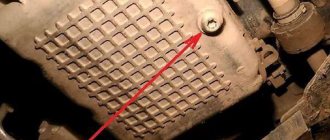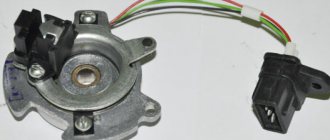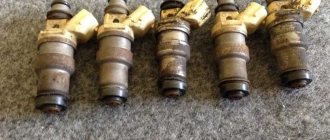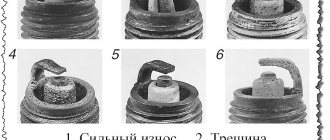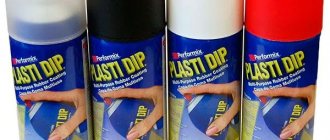How to remove oil from a car engine at home? This is a question that novice motorists often ask themselves. Indeed, during the operation of the car, a layer of dust and oil forms on the surface of the engine, which can subsequently cause a fire. Therefore, regular car washing is a prerequisite for safe use of the car. In addition to the possibility of fire, a layer of oily dirt makes it difficult to remove a significant amount of heat from the engine, which can cause overheating of the power unit.
To wash or not to wash?
But this question can be controversial: is it worth washing the engine before selling the car? If your engine has not been washed for a year or more, and there are no signs of oil leaks or other technical fluids, such a picture will be the best proof of the good condition of the engine. After all, a well-washed engine cannot tell you anything about its condition. Even if there were leaks, the engine looks like new. Therefore, whether to wash or not to wash before selling is up to you to decide depending on the situation.
In this article we are writing about engine washing, so we will consider this issue in more detail. A heavily polluted engine loses heat transfer, which can lead to excessive heating of the unit, which in turn will affect the loss of power, increase fuel consumption and accelerate its wear. Wet dirt streaks accumulated on electrical wiring can make it difficult to start the engine due to current leakage, and even cause a fire hazard. Accumulated oil and dust on the heating elements of the engine can ignite. A car with a clean engine will be much more convenient for you to maintain and repair. Auto repair shops, for the most part, do not carry out repair work on cars with dirt under the hood. The engine can be washed in two ways: at a specialized car wash and with your own hands.
Why you need to wash your engine carefully
Trying to keep your car clean can lead to its failure. Many engine components are susceptible to moisture, and if you start cleaning them without proper knowledge, this can have the following consequences:
- Failure of electrical equipment, up to a short circuit;
- Damage to expensive units, such as a generator;
- Machine fire due to use of incorrect cleaning products.
Modern cars are “stuffed” with electronics, which can cause problems due to water getting on them. A number of units run the risk of not being able to withstand a strong jet of water, and choosing the wrong cleaning agents (for example, gasoline) can lead to a fire.
Why do you need to wash your car engine?
When taking care of your car, you need to refuel it with high-quality fuel on time, change the oil, and pay attention to cleanliness. Both outside and inside
This concerns the most important part - the motor. Why you need to wash your car engine:
Why you need to wash your car engine:
- To prevent breakdowns. Evaporating liquids partially settle on the walls of the internal combustion engine, mix with dust, stick to each other, forming layers. This coating interferes with normal heat transfer. Because of this, the internal combustion engine overheats and its operation is disrupted. Troubles such as wear of the oil seal, pipe or oil line may occur. There may be problems with the electrical wiring. The accumulation of dirt makes it difficult to control the leakage of brake fluid, coolant, and engine oil.
- To prevent fires. Droplets of settled oils ignite when heated.
- A car with a clean engine is easier to sell.
- To find the problem. If the internal combustion engine is free of dirt, then you can immediately understand where the breakdown is. For example, detect the location of the leak, determine the condition of the seals.
- For quick maintenance. It will simply be more pleasant to inspect the car, change spark plugs or oil.
Let's look at the question from the other side and see why it is better to refrain from this. Problems that may await you when washing:
- You can accidentally damage electrical wiring with strong water pressure.
- If you use special solutions that are not intended for these purposes, you can cause a fire in the engine compartment. This is especially true for those moments when drying takes place using hair dryers or other similar means.
- If you do not completely dry the engine and start it, you can cause it to break down or short circuit.
Why do you wash the engine compartment?
Some people think that washing the engine is superfluous and actually useless. There are also those who perceive cleaning the engine compartment solely as a pre-sale preparation procedure in order to profitably sell the car on the secondary market.
There are several reasons why periodic washing is the right decision on the part of the car owner:
- If you clean the engine from dirt, oil and other types of contaminants, it can last much longer. This is due to the fact that due to external contamination, the operation of the forced cooling system is disrupted;
- Dirt accelerates the wear of internal combustion engine components. It starts corrosion processes, reduces engine life, forces you to change consumables more often, etc.;
- Dirt negatively affects electrical and electronic systems. Debris can make negative changes to the operation of the ignition system;
- Oil accumulation can lead to unscheduled and unexpected fires. Even a small accidental spark, and the engine is already blazing.
But we must not forget that looking at a clean and tidy engine is much more pleasant than looking at an oily, sticky pile of iron.
After washing the engine the car does not start, what should I do?
During the engine washing process, unpleasant and unnoticeable breakdowns may occur or water may enter electrical appliances, so the car may not start.
- If after washing the engine the car does not start, then you first need to inspect the spark plug channels, electrical connectors, generator, starter. If moisture is detected, parts must be thoroughly wiped or dried.
- Problems with engine operation can occur if the electrical circuit is broken. This could be a forgotten connector chip that was disconnected before washing, or an awkward movement by a motorist that led to a broken wire.
- If after washing the engine the car does not start, and the Check Engine light comes on on the instrument panel, then it will be quite easy to figure out the reasons for this yourself using the ELM327 auto scanner.
For those motorists who do not have free time or do not like to tinker with the car, the best option, in our opinion, would be to visit a car wash. Professionals will do the job of cleaning the engine compartment quickly and efficiently, and the driver won’t even get his hands dirty. In any case, washing the engine once or twice a year is within the capabilities and means of every car owner.
We recommend
DOCKER MAZBIT TURBO is a concentrated industrial cleaner for all types of heavy contaminants. Designed for effective quick cleaning of any surfaces: parts, components, mechanisms, plastics, general construction materials (concrete, stone, tiles, asphalt) from various oil-fat and petroleum contaminants, fuels and lubricants, lubricants, graphite, fuel oil, oil. Has no smell. No acid.
More details
How to remove machine oil from the floor
Choosing detergents
So how can you wash and clean the engine of your favorite car at home yourself? To clean it, regular soap is not enough. In addition, household detergents are not suitable for these purposes. To effectively remove dirt from the engine, it is better to buy special substances. They can be both universal and specialized:
- Universal. Designed for washing not only the car as a whole, but also for washing the area under the hood.
- Specialized. They can be used both to remove oils and to remove dust and dirt. Designed for both the engine and other parts of the machine.
Summarizing
To find out how to remove oil from a car engine at home, just study the recommendations or reviews of experienced motorists. They recommend using special detergents, kerosene and regular dishwashing detergent as detergents.
In addition to knowing how to clean the engine from oil and dirt at home, it is necessary to clearly understand the entire sequence of such work. And don't forget. that it is not possible to wash the engine from oil and dirt using improvised means without a certain set of equipment (brushes, rags).
Almost every car owner asked the question: “How and with what help can you wash the engine of oil and other contaminants?” During long-term operation of a vehicle, a large amount of contaminants of various origins accumulates in the engine compartment. In addition to the aesthetic appearance, this problem is important from a technical point of view. After all, a large accumulation of dirt in the power unit can affect the correct operation of the engine system. That is why it is very important to keep the engine of your vehicle clean.
Many owners turn to car washes for this service, where they clean the power unit with a jet of water under high pressure. This service has a low cost, but there is a possibility of water getting into electrical equipment, which can disrupt the operation of the generator, starter and other important systems. In this article we will look at how, with what and in what sequence you should wash the engine from oil and dirt at home.
High pressure engine washing
First, let's look at the process of the most unsafe washing option - under high pressure using a compressor.
- After this, you should wipe the surface of the units with a brush. This must be done to thoroughly wash away all layers of dirt from hard-to-reach places;
- We wash off all the chemicals with water under pressure;
- After washing, it is necessary to blow all contacts with air using a compressor, and also remove all water from the surfaces.
The danger of this method lies precisely in the use of water under pressure; water can penetrate anywhere
, therefore, after this procedure, problems with the engine (failure of the generator, sensors, etc.) are not uncommon. Sometimes car washes use a more loyal method - the chemicals are simply washed off with a hose without pressure or a special gun.
Personally, after such a wash, I experienced an error in the adsorber sensor, and this is the most harmless consequence. Therefore, I do not recommend washing the engine with a high-pressure washer!
How to clean an engine from oil and dirt with your own hands
Diesel fuel, gasoline and kerosene are used by many motorists, but this choice is not very good - there is a danger of fire or smoke in the future. Various compounds can help you wash your car engine at home.
Experienced professionals emphasize that for home cleaning of engine oil, you should prefer universal compounds, especially if cleaning is done regularly and few oil stains accumulate. In advanced cases, the power unit has to be washed with special means.
Aerosols are the most suitable for removing oil from an engine in the garage - this product is well distributed and reaches even hard-to-reach places.
The list contains preparations that are easy to use and with which it is easy to achieve the purity of the components:
- Pestone Heavy Duty is an aerosol cleaner that breaks down dirt and oil in ten minutes, after which it is enough to rinse off with water. When it comes into contact with the surface to be cleaned, the product forms foam. The product helps to cope with oil deposits and dirt, but it cannot remove old deposits; it is a good product for regular engine care;
- STP is an aerosol suitable for passenger cars, SUVs and minibuses. The exposure time is about a quarter of an hour, eliminating even complex dirt and deposits;
- Liquid Moli is a spray that lasts from fifteen to twenty minutes. Wash off with running water. Suitable for combating dust, oil stains, and reagents that get under the hood while driving. Effective even against old deposits;
- Laurel is a domestic cleaner that forms foam in the process. Not only removes various types of contaminants, but also protects engine components from corrosive processes. It is provided by the manufacturer as a concentrate, therefore during preparation it is necessary to mix it with water, after which the solution is sprayed onto the surfaces to be cleaned. Exposure time is no more than five minutes. If the contamination is significant, the concentrate is not diluted.
Precautionary measures
Respiratory and hand skin protection is required. Chemical cleaning products can provoke allergic reactions and inflammatory processes. In addition, oil stains are difficult to remove.
Therefore, work clothes and gloves, sleeves become an important part of the work process. To protect your eyes, it is recommended to use splash-proof goggles.
We explain: how to flush a car engine from carbon deposits without disassembling it yourself
Symptoms
Before flushing the engine from carbon deposits inside, it is worth figuring out whether there is any at all. The presence of foreign inclusions in the combustion chamber is indicated by:
- difficult cold start;
- engine tripping;
- smoke from the exhaust pipe is blue or black;
- reduced compression;
- excessive consumption of fuel;
- detonation and overheating of the internal combustion engine at high speeds.
The presence of a problem is also indicated by the unclear response of the internal combustion engine to intensive throttling and polluted exhaust. In advanced cases, burning particles may fly out of the pipe. But this is only possible in the absence of a catalyst.
If such symptoms are detected, you definitely cannot hesitate. Exacerbation is fraught with the emergence of critical situations:
- valves coke;
- rings become dirty;
- ignition occurs not from a candle, but from smoldering burning (glow ignition).
Experienced mechanics recommend two-stage cleaning: removing carbon deposits and cleaning the oil system. However, with the latter, not everything is so simple.
Cleaning deep contaminants in the lubrication system
In extreme cases, thorough cleaning of the oil system is necessary. It is quite natural that it will not do without easy disassembly of the motor. In general, the procedure is divided into three episodes:
- Removing the pan and valve cover. Mechanical cleaning using aggressive chemicals and grinding tools.
- Reassembly and flushing of the power unit assembly with special oil or liquid added to regular lubricant.
- Removing the tray for manual cleaning again.
The pan is, first of all, a collection of all kinds of resinous dirt. What happens if you immediately pour detergent into an internal combustion engine with an unknown history, without cleaning the oil sump. Everything is obvious - the sludge will rise and clog the oil intake screen. A red oil can will light up on the instrument panel - the engine will operate in oil starvation conditions. You will have to disassemble everything and clean it manually.
Cleaning
The above actions, according to experts, apply only to seriously contaminated engines. If high-quality lubricant was used and its replacement interval was observed, then the technology for flushing the engine from carbon deposits without disassembling is quite applicable:
- Prepare the cleaning mixture.
- Remove the spark plugs.
- Align the pistons level with each other.
- Pour 50 cubes of detergent into each combustion chamber.
- Screw in the candles.
- Leave for 7-10 hours.
- Remove the mixture igniters.
- Add 25-50 ml of cleaning agent to each cylinder.
- Turn the engine with the starter.
- Put the candles back.
- Start the power plant.
- Fill the oil system with accelerated flushing for the time specified in the instructions.
- Turn off the engine.
- Change oil and filter.
Attention! Under no circumstances should you start an internal combustion engine with the combustion chamber filled with cleaning solution and spark plugs screwed in. There will be water hammer, and the engine will have to be overhauled
The described procedure can damage the catalyst.
How to properly prepare a car for washing the engine compartment?
The engine is the main part of the car. Even minor dirt can negatively affect its performance. First, the thermoregulation of the motor is disrupted. Most of its components are made of metal.
Layers of oil mixed with dirt contribute to overheating of the cylinder walls. In the engine compartment there is a radiator that cools the engine. Dust, soot and insects accumulating in the cells disrupt heat exchange.
They approach engine cleaning responsibly, having previously studied all the features of this process.
During the preparation period, perform the following actions:
- Choose a place to park your car. It is recommended to wash the engine in a garage. After this procedure, the car cannot be started for 12-24 hours. At this time, the engine is thoroughly dried.
- Check electrical components for damage. There should be no exposed cables, holes or cracks in the engine compartment where water can penetrate.
- Prepare cleaning products and a washing machine. In addition, you will need tape, large and small brushes, a respirator, gloves, a container for collecting liquid, and polyethylene.
- Cool the engine to 50-60 °C. If the engine is cold, it needs to be warmed up slightly.
- Reset the battery terminals.
- Cover moisture-sensitive areas with plastic film, which is secured with tape. Particular attention is paid to the idle speed sensor, which begins to work incorrectly after water gets in.
The heart of the car is the power unit, and even small pollution affects power and performance. Violations of thermoregulation lead to overheating of the cylinder walls, changes in heat transfer affect all ongoing processes. Used motor oil accumulated outside the engine significantly affects the growth of contaminants.
Cleaning the motor is required because:
- proper care increases the service life of the engine and ensures the correct operation of the cooling system;
- power unit components wear out more slowly (due to better heat transfer);
- electronic sensors and engine compartment devices are functioning correctly;
- the ignition system remains operational longer.
The reason to start cleaning the engine compartment is also to prepare the car for sale. This is the only way the buyer will appreciate the car at its true worth.
Why is dirt under the hood dangerous?
A car's engine is its heart. Even small accumulations of dirt and oil can cause it to malfunction. First of all, pollution affects the thermal regulation of the engine. As you know, the power unit largely consists of metal elements. Thus, layers of dirt and oil accumulating on the walls of its elements can contribute to overheating. In addition, there is also a radiator in the engine compartment, which is responsible for cooling the engine. Large layers of dirt, dust, and insects accumulated on the radiator honeycomb will disrupt the heat exchange process.
What to use
It is interesting that at many self-service car washes it is prohibited to touch the engine compartment. That’s why it’s not always possible to wash your car here.
Regular car washes offer cleaning services for neglected and dirty engine compartments. The only problem is that basically they simply supply regular water or water mixed with shampoo to the engine under high pressure. By knocking down dirt, at the same time, the integrity of the wiring is often compromised; water penetrates where it should not be.
Even the issue of using a homemade high-pressure washer has certain complaints, if we talk specifically about cleaning the engine compartment.
Therefore, it is logical to ask what exactly can and should be used. Let's consider several options:
- Bucket of water and brush
. Relatively safe, but ineffective. This method will be very difficult to clean the motor if it is really dirty; - Water and high pressure
. This is a risk of causing mechanical damage to wiring, gaskets, etc. It gives a quick effect and good results. But it's better not to take risks; - Diesel, gasoline and kerosene
. They serve as solvents for dirt. You should absolutely refuse gasoline. It is the most flammable. Kerosene and diesel are less dangerous, but when processing heating engine elements they can cause smoke; - Steam
. But steam washing is quite effective and relatively safe. We have already talked about it separately; - Special means
. Shampoos and car chemicals are available for sale, the task of which is precisely to clean the engine compartment. Many of them are really effective; - Household chemicals
. It is often used as a homemade product for cleaning internal combustion engines at home. When used correctly it gives excellent results.
Even if the block is entirely aluminum, rust is not the only major problem if the compartment is not washed properly.
Yes, the easiest way to bring it to perfect condition is with a removed engine. But no one will resort to such things for the sake of washing.
Rating of popular engine cleaners
This subsection presents a list of effective, that is, good car engine cleaners that have repeatedly proven their worth in practice. The list does not advertise any of the products presented on it. It is compiled based on comments found on the Internet and the results of real tests. Therefore, all the cleaners presented below are recommended for purchase by both ordinary car enthusiasts and professionals who professionally wash cars in car repair shops, car washes, and so on.
Spray engine cleaner Liqui Moly Motorraum-Reiniger
The Liqui Moly Motorraum-Reiniger aerosol spray cleaner is rightfully considered one of the best among its competitors. This is a special cleaner specifically designed for use in the engine compartments of almost any car. With its help, you can quickly and easily remove stains of oil, grease, bitumen, tar, brake pad abrasive, preservatives, salt compounds from roads and other contaminants. Liquid Moly engine cleaner does not contain chlorinated hydrocarbons. Propane/butane is used as the expulsion gas in the cylinder. Traditional use. The distance from which the product needs to be applied is 20...30 cm. The waiting time for the chemical reaction to complete is 10...20 minutes (if the contamination is old, it is better to wait up to 20 minutes or more, this will ensure high efficiency of the product).
Reviews and actual tests conducted by car enthusiasts show that the Liqui Moly Motorraum-Reiniger cleaner really copes with the tasks assigned to it very well. At the same time, thick foam ensures penetration into various hard-to-reach places. It is also noted that the product is quite economical, so one package of cleaner will probably be enough for several sessions of treating the engine compartment (for example, several times a year, in the off-season). Great for treating your car before selling it. The only disadvantage of this purifier is the relatively high price compared to its competitors. However, this feature is typical for most auto chemicals produced under the world famous Liqui Moly brand.
Liqui Moly Motorraum-Reiniger engine cleaner spray is sold in a 400 ml aerosol can. The article number under which it can be purchased in any online store is 3963. The average price of such packaging as of the winter of 2018/2019 is about 600 rubles.
1
Runway Foamy Engine Cleaner
Runway Foamy Engine Cleaner is one of the most popular and effective products in its market segment. The instructions for the product indicate that it easily removes any contaminants present in the engine compartment - burnt technical fluids, oil stains, salt road residues and simply old dirt. In addition, it prevents the destruction of electrical wiring under the hood. Safe for elements made of plastic and rubber. Dodecylbenzenesulfonic acid is used as the main detergent. It is a synthetic emulsifier that dissolves the substances listed above and allows you to wash off even after the emulsifier has dried.
Tests conducted by car owners suggest that the Runway foam engine cleaner really does a very good job even of old dirt and easily removes dried stains of oil, grease, brake fluid, and so on. The method of use is traditional. The time you need to wait before washing off the product is about 5...7 minutes, and largely depends on the degree of oldness of the stains. The cleaner has a very thick white foam that easily penetrates into the most inaccessible places, various crevices, and so on. Foam (emulsifier) quickly dissolves contaminants, this can be seen with the naked eye after applying the product. A separate advantage of this cleaner is its large packaging, which has a low price.
Runway Foamy Engine Cleaner is sold in a 650 ml aerosol can. The article number for this package is RW6080. Its price as of the above period is about 250 rubles.
2
Hi Gear ENGINE SHINE FOAMING DEGREASER
Hi Gear ENGINE SHINE FOAMING DEGREASER foam engine cleaner is popular not only among domestic, but also among foreign car owners. The product contains powerful emulsifiers, the task of which is to dissolve any, even the oldest, stains from oil, fuel, grease, bitumen, and just dirt. Foam applied to the treated surface is easily held even on vertical planes without sliding down. This makes it possible to dissolve dirt even on properly located parts, that is, cleaning complex contaminants. The foam also effectively spreads into hard-to-reach places. The composition of the Hi Gear ENGINE SHINE FOAMING DEGREASER cleaner protects the engine electrical wiring, preventing fire on its elements. Absolutely safe for parts made of plastic or rubber. It can be used not only to treat the engine compartment of a car, but also to clean concrete floors from oil. The latter circumstance suggests that it can be used for cleaning floors in garages, workshops, and so on, instead of an appropriate cleaning agent.
The instructions for the cleaner indicate that before applying it to the surface to be treated, the engine must be warmed up to a temperature of about +50...+60° C, and then turned off. Next, shake the can thoroughly and apply the product. Waiting time - 10...15 minutes. The composition must be washed off with a powerful jet of water (for example, from a Karcher). After washing off, you need to let the engine dry for 15...20 minutes. Short-term exposure of the cleaner to the drive belts of auxiliary units is allowed. However, the cleaner should not be allowed to come into contact with the paintwork of the car body. If this happens, you need to immediately wash it off with water, without rubbing it with a napkin or rag! There is also no need to wipe anything off after this.
High Gear foam engine cleaner is packaged in 454 ml aerosol cans. The article number for this packaging where you can buy it is HG5377. The price of the goods for the above period is about 460 rubles.
3
Aerosol engine cleaner ASTROhim
The ASTROhim aerosol engine cleaner, judging by reviews from car enthusiasts, has a good thick foam, which, according to the manufacturer, includes a balanced complex of detergent surfactants (abbreviated as surfactants). The foam penetrates into hard-to-reach places, allowing dirt to be removed even there. This helps to remove it not mechanically (manually), but with the help of the mentioned means and water pressure. The instructions indicate that Astrokhim engine cleaner can be used to clean power units not only of cars, but also of motorcycles, boats, garden and agricultural equipment. The cleaner can be used even when the engine is not cooled down. ASTROhim cleaner contains no solvent, so it is absolutely safe for plastic and rubber products.
Real tests and reviews from car enthusiasts who have used ASTROhim engine cleaner at different times show that it is indeed a very effective product that can remove dried stains of dirt, oil, brake fluid, fuel and other contaminants. Moreover, it does this with the help of thick white foam, which penetrates into the micropores of the surfaces being treated and removes dirt from there. Also, one of the many advantages of this composition is the large volume of packaging at its low price.
Astrokhim engine cleaner is sold in various packages. The most common of them is a 520 ml aerosol can. The cylinder article number is AC387. Its price for the specified period is 150 rubles. As for other packaging, a 250 ml spray bottle is sold under item number AC380. The price of the package is 80 rubles. The other packaging is a 500 ml manual trigger spray bottle. The article number for this package is AC385. Its price is 120 rubles. And the largest package is a 650 ml aerosol can. Its article number is AC3876. Its average price is about 160 rubles.
4
Grass Engine Cleaner
Grass Engine Cleaner is positioned by the manufacturer as a high-quality and inexpensive cleaner of engine elements from dirt, oils, fuel, salt deposits and other contaminants, including old and dried ones. The instructions specifically state that Grass Engine Cleaner can only be used on passenger cars! The product does not contain alkalis (made using a unique alkali-free formula) using organic solvents and a complex of effective surfactants. Thus, it is completely safe for the skin of human hands, as well as for the paintwork of a car. Please note that the package does not sell a ready-to-use product, but its concentrate, which is diluted with water in a ratio of 200 grams per liter of water.
Tests performed on the Grass engine cleaner show that it really does a good job of cleaning the surface of engine parts from oils and dirt. The resulting thick foam dissolves even old stains well. Another significant advantage of this cleaner is its low price, given that the concentrate is sold in the package. Therefore, its acquisition will be a profitable purchase. The only disadvantage of the cleaner is that the packaging is equipped with a manual trigger, which reduces the ease of use, especially if you plan to treat a large engine and/or use a large amount of cleaner for additional treatment of dried dirt stains.
Engine cleaner "Grass" is sold in a bottle equipped with a 500 ml manual trigger sprayer. The article number of such packaging is 116105. Its average price for the period indicated above is about 90 rubles.
5
Lavr Foam Motor Cleaner
Cleaning the engine compartment Lavr Foam Motor Cleaner is a foam engine cleaner that is designed not only for one-time cleaning of the engine compartment, but also for regular use. It is its constant use that will keep engine parts clean and protect them from the effects of external harmful factors, such as salts and alkalis found in road asphalt in winter, as well as from fuel, brake fluid, dirt, brake pad abrasive, and so on. The cleaner contains thick active foam that can effectively remove even old stains. According to the instructions, after use there is no need for additional brushing, but only rinse with water. After processing, no greasy film remains on the surfaces of the parts. Absolutely safe for engine parts and also prevents the formation of corrosion on metal surfaces.
According to the instructions, before using the product, it is necessary to warm up the engine to operating temperature (medium). Next, you need to cover the air duct and critical electrical parts of the engine (spark plugs, contacts) with plastic film or similar waterproof material. Next, using a manual trigger, apply “Lavr” engine cleaner to the contaminated surfaces to be treated. After this, wait for some time (the instructions indicate a period of 3...5 minutes, but longer time is allowed), after which the formed foam must be washed off with copious amounts of water. To do this, you can use a brush and soap, or you can use a pump. However, in the latter case there is a risk of damage to the said polyethylene film protecting the electrical contacts of the motor.
As for the practical use of the Lavr Foam Motor Cleaner, reviews indicate its average effectiveness. Overall it does a good job of cleaning, but in some cases it was noted that it had difficulty removing stubborn chemical stains. However, it is quite suitable for garage use, and is definitely recommended for purchase by ordinary car owners. It is perfect for cleaning the engine during pre-sale preparation of the car.
Lavr Foam Motor Cleaner, a foam cleaner for the engine compartment, is sold in a 480 ml bottle with a manual trigger sprayer. The article number of this package, according to which you can buy the cleaner in the online store, is Ln1508. The average price of such packaging is 200 rubles.
6
Foam cleaner Kerry
Kerry is positioned by the manufacturer as a foam cleaner for external engine surfaces. It contains no organic solvents. Instead, it is water-based with the addition of a complex of surfactants. This allows us to assert that the effectiveness of this product is in no way inferior to similar cleaners created on the basis of organic solvents. By the way, the absence of solvents in the Kerry cleaner, firstly, eliminates the sharp unpleasant odor, and secondly, its use is much safer from the point of view of a possible fire. Water-based cleaners are also much more environmentally friendly. They do not harm the environment. They are also safe for human skin. However, if it gets on your skin, it is still better to wash it off with water.
Tests carried out by car enthusiasts show that the effectiveness of the Kerry cleaner is actually rated as average. So, in practice, it copes well with moderately complex mud stains. However, it may not be able to cope with more complex contaminants, including chemical ones. To do this, you need to use more effective products or remove stains mechanically (in particular, using brushes and other similar tools). Therefore, this product is more suitable as a preventative, that is, used regularly to clean the engine, preventing old and dried stains that are difficult to remove from appearing on its parts.
Kerry foam engine cleaner is sold in two different packages. The first is in a 520 ml aerosol can. The article number for purchase in the online store is KR915. The price of such a package is 160 rubles. The second type of packaging is a manual trigger bottle. Its article number is KR515. The price of such packaging is on average 100 rubles.
7
Fenom Engine Cleaner
Fenom belongs to the category of classic external cleaners, and with its help you can clean parts located in the engine compartment, gearbox and other parts of the car (and not only) that need to be cleaned of oil stains, various process fluids, fuel, and simply dried mud. In accordance with the instructions, before using the Fenom cleaner, it is necessary to warm up the engine to a temperature of about +50°C, and then turn it off. Next, you need to shake the can thoroughly and apply the cleaner to the surfaces to be treated. Waiting time - 15 minutes. After this, you need to rinse off the foam with water. The instructions explicitly state that both working foam and water should not be allowed to enter the engine air intake. Therefore, if possible, it is better to cover it with plastic film or similar waterproof material.
The effectiveness of the Fenom engine cleaner is actually average. It does a good job of removing more or less fresh and simple (non-chemical) stains, but it may not be able to cope with more stubborn stains. In this case, you can try to apply the product two or even three times. However, this, firstly, will lead to overspending, and secondly, it also does not guarantee a positive result. Therefore, the Phenom cleaner can rather be recommended as a preventative agent that needs to be used to treat the surfaces of engine parts in order to prevent the occurrence of areas of severe contamination on them, including those caused by spilling process fluids.
The Phenom engine cleaner is sold in a 520 ml aerosol can. The cylinder article number by which it can be purchased is FN407. The average price of a package is about 180 rubles.
8
Mannol engine cleaner
Under the Mannol brand, two similar compositions are produced, intended for cleaning the working surfaces of engine parts, transmissions and other vehicle elements. The first is Mannol Motor Cleaner, and the second is Mannol Motor Kaltreiniger. Their compositions are almost identical, and they differ only in packaging. The first is sold in a bottle with a manual trigger, and the second in an aerosol can. The use of funds is traditional. Their only difference is that using an aerosol can to apply the product to the surfaces being treated is easier and faster. The foam of the aerosol product is also a little thicker, and better penetrates hard-to-reach places and pores of engine parts.
Reviews about the Mannol engine cleaner generally indicate that the effectiveness of the product is characterized as average. Similar to the previous means, it can be recommended as a preventative, that is, one that can be used to get rid of only minor contaminants and maintain the cleanliness of engine parts on an ongoing basis. If the stain is old or chemically resistant, then there is a high probability that this cleaner will not cope with the task assigned to it.
External engine cleaning Mannol Motor Cleaner is sold in a 500 ml bottle. The article number of such packaging for online stores is 9973. Its price is 150 rubles. As for the Mannol Motor Kaltreiniger engine cleaning product, it is packaged in 450 ml aerosol cans. The product article number is 9671. Its price for the period indicated above is about 200 rubles.
9
Foam engine cleaner Abro
Foam cleaner Abro DG-300 is a modern product for removing dirt and deposits on the surface of engine parts in the engine compartment. Can also be used to treat other surfaces that have been previously contaminated with oil, grease, fuel, brake fluid and various other process fluids. The instructions indicate that the product copes with removal quickly and effectively. It is positioned as a cleaner for use in garage conditions, so it is recommended for use by ordinary car owners.
Reviews of the Abro engine cleaner indicate that it copes with its task with average efficiency. In some cases, it is noted that the cleaner has an unpleasant, pungent odor, so you need to work with it in a well-ventilated area or in the fresh air. However, the product is generally recommended as a preventative, for regular use and keeping the engine compartment clean on a regular basis.
The Abro foam engine cleaner is sold in a 510 ml aerosol can. The article number by which it can be purchased is DG300. Its average price is about 350 rubles.
10
Let us remind you that the list includes only the most popular cleaners mentioned on the Internet. In fact, their number is much larger, and it is constantly increasing due to the fact that various auto chemical manufacturers are re-entering this market. If you have had experience using any engine cleaner, write about it in the comments. This will be of interest to both the editors and car owners.
Conclusion
Using a car engine cleaner will not only ensure that repair work is carried out in relatively clean conditions, but will also be a preventive measure against contamination of the internal parts of the engine parts. In addition, a clean engine minimizes the likelihood of a fire on the surface of parts, and also minimizes the impact of various harmful substances, such as salts and alkalis, which are contained in the anti-icing composition, which is widely used on the roads of megalopolises in the winter season. Well, it goes without saying that it is advisable to use cleaners before selling the car. This will make her look more presentable. Well, the car owner can choose any of the cleaners presented in the above rating.
How to wash the engine yourself
For many car enthusiasts, washing the engine compartment and engine can be both a forced procedure and a desire to keep the car as clean and serviceable as possible. In the first case, there is an urgent need to wash engine oil and other technical fluids from the engine that have formed drips due to various malfunctions. Also, the engine often becomes dirty after repairs.
In the second case, the engine is washed to maintain cleanliness and remove the so-called mud “coat”. According to a large number of owners, a layer of dirt on the engine impairs the efficiency of heat removal from the engine, and can also cause electrical equipment malfunctions, etc. As for the process of cleaning the engine from dirt itself, you can use the services of a car wash to remove dirt with a jet of water under pressure, and you can also more delicately wash the engine yourself.
Read in this article
Why do you need to wash the main components of your car?
For each car, just like for a person, it is customary to follow certain rules of “hygiene”. This is necessary to ensure that the vehicle body is not subject to corrosion and is resistant to external influences. In addition, the powertrain and transmission dissipate heat through more than just coolant. The outer metal surfaces of their housings play an important role in this process. If they become covered with a layer of dirt and oil, thermoregulation may be disrupted.
In addition to the power unit, contamination can affect the radiator, through which the coolant releases its heat into the surrounding atmosphere. Insects and dirt adhering to the cells complicate the heat exchange process.
We should not forget that engine parts are subject to wear and tear during operation. This means that metal particles are getting into the engine oil. Unfortunately, not all of them are removed using an oil filter. Some of the waste settles in the engine crankcase. The oil composition, circulating through the system, picks them up again and distributes them throughout the entire engine lubrication system. When metal “dust” gets on contacting surfaces, it gradually destroys them. The consequences are obvious - a reduction in the life of the motor, disruption of its normal operation, and loss of power. That is why, when changing the oil at home, motorists try to completely drain it from the system. Some craftsmen then manage to remove the most contaminated oil residues from the crankcase using a syringe and tube.
Contamination of the engine compartment and engine can negatively affect the operation of the electronics and ignition system. In addition, if an oil seal has leaked somewhere in the engine, this malfunction is difficult to detect due to the thick layer of dirt and oil deposits. You should also be aware that if the power unit is dirty, the risk of fire increases. Oil deposits may ignite in the event of an exhaust gas leak. An accidental spark can also cause such fatal consequences. All of the above arguments lead to an obvious conclusion: periodically cleaning and rinsing the main components of the car is as important as taking a regular shower for its owner.
Another reason to wash the engine and the entire engine compartment is to sell the car. In this case, pre-sale preparation is an integral attribute that allows the buyer to evaluate all the advantages of the proposed vehicle.
How to wash your car well yourself
The most interesting thing is to wash the car yourself and not at a rental car wash. Car owners prefer to do this using a household mini-wash.
Various devices of various modifications are sold in the trade, but the most popular of them are mini-washes from Karcher. The equipment was created in order to wash your car yourself, quickly and easily, at home.
It is always beneficial to use branded equipment. In addition to the device itself, additional components and related products of appropriate quality are offered.
Rinse
If desired, the motorist can quickly rinse the vehicle. Using water pressure, not only dirt and dust are removed from the body, the wheels are easily washed and the wheel arches are cleared of deposits.
Depending on the weather conditions, you can decide for yourself whether to wipe off any remaining water from the body or not. If you don’t have enough time, then this doesn’t matter.
Thorough washing
An operation like this takes a good chunk of time. Of course, it’s worth starting with a regular rinse
At the same time, pay attention not only to external dust and dirt, but also apply pressure to the wheels and arches
To really wash your car properly, you need to use several types of cleaning products. We recommend purchasing a product for cleaning rims, rubber, plastic and plastic, as well as for the paintwork of your car.
The product is applied to the surface according to the instructions and left. It needs some time to be absorbed and produce the desired effect. Then comes the main body treatment.
To do this, use a special nozzle-container into which a high-pressure cleaner is poured. This device, thanks to physics, turns detergent into foam. The foam is applied from bottom to top, over the entire surface. They are not limited to one layer, but apply two layers.
After standing for a few minutes, foam begins to flow from the walls, this is a signal. Gradually, holding the water stream at an angle of 45°, wash off the foam. Having finished removing the foam, you need to run water over the entire surface again for residual rinsing.
Special microfiber rags are sold for wiping the surface dry. Using such towels will be very useful. Before applying wax or polish, make sure there are no smudges or streaks.
To give the tires a fresher look, a special ink is sold. A small thing, but nice.
Flushing the lubrication system
Flushing the lubrication system at home is done in 2 ways:
- The car is driven onto an overpass or inspection hole. Then the used oil is removed through the drain plug located below. Pour flushing agent into the neck. Turn on the engine for the specified time. After this, the composition is also removed from the system.
- Leave the old grease. Special additives are added to it to clean the internal combustion engine. After this, the engine is started for a few minutes. Used oil is drained in the standard way.
How to clean the engine from oil and dirt?
A common cleaning tool is ordinary water, which is supplied under high pressure. However, this method has its drawbacks. Water can clean contaminated surfaces and remove deposits, but there is a high risk of damaging engine parts or related system elements due to excessive pressure. Water will enter the generator and other equally important systems, causing damage or causing corrosion damage.
Alas, not all drivers know how to wash the engine, except water. You can use special detergents. You can buy them at almost any auto store; you need to use them according to the instructions. A high-quality composition cleans the power unit well without harming it. It is worth remembering that an aluminum engine will darken if it is exposed to a cleaner containing alkalis.
From available means, car owners usually use kerosene, diesel fuel or gasoline. The latter is not recommended for use, as it is very flammable and easily ignites. However, the same can be said about other “washing agents” of this type.
When washing, fuel has a destructive effect on non-metallic parts.
Cleaning the cooling system
Over time, the channels of the cooling system become covered with scale and salt deposits. This is explained by the constant heating and cooling of antifreeze.
Washing is performed in the following way:
- Used antifreeze is removed from the system. Mix distilled water with vinegar. Pour the composition into the cooling system.
- Turn on the engine for 10-15 minutes. Drain the flushing composition.
- Fill in new antifreeze.
Folk remedies are not always effective. Chemical compounds help clean cooling channels faster.
We answer: is it possible to wash a car engine with a Karcher washing machine or should you not do it?
- The high-speed jet is suitable for washing carburetor engines.
- Due to the presence of electronics, the injection internal combustion engine must be cleaned manually.
Getting ready to clean up
The range of equipment for this operation is small. To begin with, it is enough to review your own things and identify unnecessary ones - they will be used as rags for cleaning various places. It would also be nice to have with you:
- special sprays or cleaning liquids;
- brushes of various widths;
- scotch;
- cling film.
Regarding the topic of whether it is possible to wash a car engine with Karcher, the answer here may be positive, but only in relation to a carburetor engine. If you decide to use a mini-wash, then you need to prepare the drying equipment in advance. The latter can be either a vacuum cleaner or a household compressor.
Cleaning the internal combustion engine with carburetor
The procedure for washing the power unit is preceded by preparatory measures:
- remove parts that interfere with free access to engine elements;
- remove the battery from the engine compartment;
- carry out reliable insulation of electrical devices (ignition coil, generator, distributor, fuse box).
- Film and tape are used as insulating materials.
- The work is carried out “cold”.
Actually, the washing technology is simple. A cleaning composition is applied to contaminated areas. While the chemical reaction is taking place, hard-to-reach places and electrical wiring are treated with brushes and rags. Afterwards, everything is washed off with a high-speed stream of water, electrical devices are unsealed, and drying is carried out.
What and how best to wash the engine at a car wash
A few words about modern power plants
The injection unit is cleaned in almost the same way. The detergent is applied either to a rag (near the sensors) or directly to the surface. You need to remove the cleaning composition after a chemical reaction not with water, but with rags. With such a careful method, it is possible not to isolate all electrical communications.
Apply cleaning agent
After the engine has warmed up a little and some elements have been protected from moisture, you can begin spraying the cleaning composition. Modern engine cleaning products act quickly and effectively. It is not advisable to use too aggressive chemicals based on petroleum products or solvents. They quickly act on oil build-ups and stubborn dirt, but at the same time they destroy rubber tubes with plastic located under the hood. To wash the engine, it is better to use water-based cleaning compounds.
General purpose cleaners that can remove grease can be used.
Depending on how dirty the engine is, you need to let the cleaning composition soak into the dirt film for 3–10 minutes. Do not let the cleaner dry on it, otherwise traces will remain.
If the motor is heavily soiled or there is stubborn dirt, it is better to use a brush with a long handle. Hard-to-reach places can be cleaned with a toothbrush.
After applying the cleaner and, if necessary, using a brush, thoroughly wash the engine and its components with water.
If you use a high pressure washer, do not apply too much pressure or spray water too close to electrical connectors.
Allow the water to dry briefly, then wipe the accessible parts of the engine with a clean rag before the water dries itself, so as not to leave any traces of dried water. After wiping with a dry cloth, start the car and let it run for a few minutes. This will help the remaining moisture evaporate.
When everything is dry and the engine has cooled, apply a special protective compound. You can also apply a protective coating to the engine compartment plastic and rubber tubes.
Step-by-step instructions for washing the power plant
In order to clean the power plant correctly and without consequences, you must adhere to the following rules and follow the instructions.
Step 1. Preparatory stage.
It is recommended to carry out the cleaning process in warm and dry weather. This way, the moisture remaining in the engine compartment will evaporate several times faster.
First, you need to prepare all available means in advance. We will need: personal protective equipment, foil or polyethylene, tape, a brush of different sizes (medium and small, for hard-to-reach places), a sponge, a rag, a cleaning agent, a container with water, a container for collecting remaining dirt.
Cleaning is carried out at an engine temperature of 50-60 degrees. If the engine has been started, then it is necessary to allow it to cool to the desired temperature. Otherwise, you need to start and warm up the engine to the specified temperature.
Next, open the hood and remove the terminals from the battery.
After that, using prepared polyethylene or foil, we cover all the places where the electrical equipment is located and fix them with tape
We pay great attention to the idle speed sensor, since if you overdo it and fill it with water, then there may be problems with idle speed
Step 2
Precautionary measures
Personal protective equipment must be used. First of all, these are rubber gloves. Chemical cleaners can be harmful to your skin. In addition, contaminants in the form of oil are very difficult to remove. Therefore, rubber gloves and work uniform will be an integral part of this process.
In addition, we recommend using safety glasses whenever possible. Sprays and drops of cleaner may get into your eyes. Glasses will help prevent drops of cleaner, dirt and other foreign objects from getting into your eyes.
Step 3: Apply Cleaner
We carefully read the instructions for the purchased cleaner.
First, you need to rinse all contaminated surfaces with a small amount of water. Then the chemical is applied. If the product is in the form of an aerosol, then it is simply sprayed onto the required areas. If the product is in the form of a solution, then it is applied using a sponge. We recommend using a toothbrush to clean hard-to-reach places.
After application, wait the required time for the cleaner to interact with the contaminants. The duration is usually indicated in the instructions.
Step 4. Safety and environmental measures.
First of all, you need to carefully apply the cleaner. These mixtures are highly flammable and explosive, so safety regulations must be followed.
During the washing process, it is necessary to ensure cleanliness and not pollute the environment. If possible, any remaining dirt and oil should be collected in a container specially prepared for this purpose.
Step 5. Final stage
Finally, we rinse all the places where the cleaner was applied. It will be convenient to use a hose with a low water pressure
It is worth noting that the engine compartment must be washed with caution, avoiding contact with electrical equipment, even though they are protected with polyethylene or foil.
It doesn’t take a lot of time or money to clean your engine from oil and dirt. You just need to follow the instructions and rules, and then your engine will shine and will not fail at the right time.
Sometimes you really want to treat your car with water treatments. However, if there is no question of whether or not to wash the body and interior of the car, then washing the engine raises some concerns. Now we will try to understand its intricacies and finally wash the engine with our own hands.
How to properly clean a car engine
To obtain the expected result, it is necessary to clean the motor surface in the following sequence:
- Before starting work, it is necessary that the unit has cooled down to operating temperatures. Neglecting this requirement may cause deformation of the heated cylinder head when using sufficiently cold water.
- It is removed from the battery using a key. On vehicles with a hybrid powertrain, the specific location of the battery must be taken into account.
- After this, all elements located in the engine compartment (air intake, various sensors) should be protected from moisture. To do this, you need to use polyethylene as well as foil. If such work is done poorly or not done at all, then there is a guaranteed entry of water into the air duct. This will lead to quite serious damage to the internal combustion engine.
- The detergent is applied evenly over the entire surface of the car.
- The process of washing a car engine begins with slightly wetting the surface with warm water. After this, using a sponge or thick cloth, begin to wipe the contaminated surfaces. If some places are easy to reach, then it is advisable to use a brush or brush.
- It is not always possible to immediately clean the engine from oil and dirt using improvised means. If there are old oil stains on the engine body, then to remove them you need to use an ordinary toothbrush. After all, if it was not possible to immediately remove the oil stain, you need to use a more radical remedy. We are talking about using kerosene, but only for cleaning metal parts. After all, it is well known that using this substance on plastic and painted surfaces is extremely risky.
Drying
Drying the car engine is carried out after completion of all cleaning work. To do this, use a dry rag or towel to wipe the surface dry.
If, during the wiping process, places on the battery contacts were found that showed signs of corrosion, then a solution of water and baking soda should be used to stop and localize this negative process. It is very important that the above ingredients in the solution are in a 1:1 ratio.
Wash it yourself
It is not necessary to use the services of car washes, because you can bring the power unit into proper shape with your own hands in a garage.
Nuances
There are several recommendations that, if followed, will help avoid negative consequences:
- It is better to wash the engine warm. A “cold”, and even more so a “hot” unit should not be washed; it is better to wait until it cools down to a temperature of 30-40 degrees, which is optimal for the procedure;
- The on-board network must be de-energized. To do this, you need to remove the terminal from the battery, or even better, remove the battery;
- It is better to cover electrical elements to prevent water from getting on them. For this purpose, plastic film and tape are suitable, which are used to wrap electrical appliances under the hood (distributor, fuse box, generator, alarm unit, etc.);
- It is also necessary to close the elements into which water cannot enter (air filter housing, air intake);
- You should take care to protect all stickers located under the hood from water.
If all measures are followed, after washing you will not have to look for and fix the problem due to which the engine does not start.
Washing technique
To begin with, it is worth preparing the power unit for cleaning procedures. This is done by isolating areas that should not have contact with water. So, before washing the engine, you need to seal the air filter, battery pack, terminals and other areas with electrical connections with tape and polyethylene.
Next, you can apply the composition. Depending on the volume of cleaning mass, a brush or rag of a certain size may be required. It is usually not recommended to apply a large volume of cleaning mass at once - as you rub with a brush and dilute with water, foam is produced that covers a much larger area. In the question of how to wash the engine, its temperature is also important. The optimal mode from the point of view of dirt removal efficiency is considered to be 50-80°C, but not all preparations support the possibility of contact with hot surfaces.
